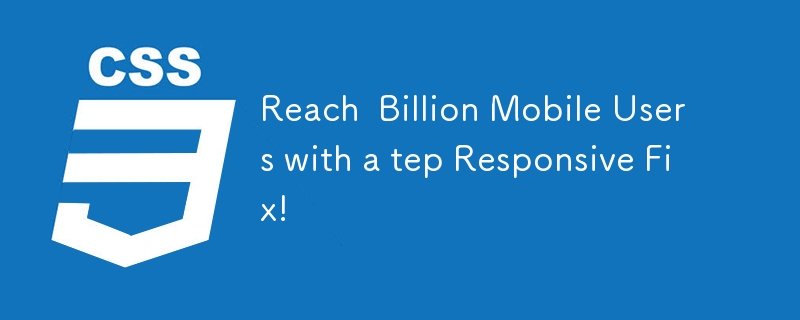Home >Web Front-end >CSS Tutorial >Reach Billion Mobile Users with a tep Responsive Fix!
Reach Billion Mobile Users with a tep Responsive Fix!
- Susan SarandonOriginal
- 2024-10-07 20:08:311134browse

In today's digital landscape, a website's success relies heavily on its ability to adapt effortlessly to various screen sizes, from desktops to tablets and smartphones. A responsive website is one that can seamlessly adjust to the client's screen, ensuring an optimal user experience. With over 3.5 billion mobile users worldwide, having a responsive website is crucial to stay ahead in the game. To learn more about transforming your website, visit https://carsnewstoday.com. In this article, we'll delve into how to create a responsive website in just three easy steps.
Step 1: Designing a Flexible Layout
When building a responsive website or revamping an existing one, the layout is the first vital element to consider. My approach is to start by creating a non-responsive layout with a fixed default size. For instance, the default width of CatsWhoCode.com is 1100px. Once I'm satisfied with the non-responsive version, I add media queries and make slight adjustments to the code to make it responsive. This approach allows me to focus on one task at a time, making the process more efficient.
After completing your non-responsive website, the next step is to add the following lines of code within the
and tags on your HTML page. This will set the view on all screens to a 1×1 aspect ratio and remove the default functionality from iPhones and other smartphone browsers, which render websites at full-view and allow users to zoom into the layout by pinching.<meta name="viewport" content="width=device-width,initial-scale=1,maximum-scale=1,user-scalable=no"> <meta http-equiv="X-UA-Compatible" content="IE=edge,chrome=1"> <meta name="HandheldFriendly" content="true">
The above is the detailed content of Reach Billion Mobile Users with a tep Responsive Fix!. For more information, please follow other related articles on the PHP Chinese website!

